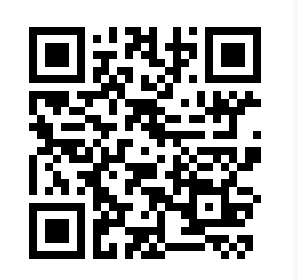Instincts, Feelings, Thoughts, and Behavior
We have discussed how the context and content of data can be used to direct the conclusion people make, and we discussed how perception works and can be manipulated. What happens then? Now that this data is perceived, what takes place? In this section we will discuss the role of instincts and feelings (emotions) in human behavior. Through the feedback process of perception and the held world view, the meaning of the data is interpreted by the individual. Data received by perception and colored by the filters will trigger one or more instinctive responses based upon this interpretation.
The first thing I need to cover is exactly what instincts are and what instinctive behavior is. Wikipedia defines instinct as: Innate behavior that is the inherent inclination of a living organism towards a particular complex behavior. The simplest example of an instinctive behavior is a fixed action pattern (FAP), in which a very short to medium length sequence of actions, without variation, are carried out in response to a clearly defined stimulus. Many observers of animal behavior realized that throughout the animal kingdom virtually every animal has a set of behaviors and actions/reactions unique to that species. In this context, behaviors are the way the animal goes about its everyday life, while actions/reactions are executed when faced with specific stimulation. Close to home, pet owners know that cats and dogs demonstrate predictable, but species unique actions/reactions to a given situation and that these behaviors can be charted and accurately predict what the animal will do in virtually every given situation with a high extreme of confidence. Mapping of the animal’s stimulus to behavior allowed humans to gain mastery over the lower animals and use them to our own purposes. As is the case with pet owners, the owner soon learns not only how their pet will react to any given situation, but they also learn how to teach the pet to respond in a manner favorable to the owner. With this common knowledge history, it was only a matter of time before someone would start thinking of how to apply this to humans as well. Think for a moment what such a capability would mean to those in power. The ability to have people respond to stimulus with a behavior that can be accurately predicted with high degree of confidence would be worth more than anything else to governments and those individuals of extreme wealth and power.
Unlike the lower animals, the first mapping of observed behavior in humans to particular stimuli showed no predictable behavior with a high enough degree of certainty to make it practical to predict or control. The reason for this failure is that mapping behavior assumes a direct AND unconscious link from stimuli to behavior. This assumption only has relevance with the lower animals, and is as wrong as it is incomplete when applied to humans. Humans became masters of the earth because they were not limited to instinctive responses to external stimulus, but rather could leverage reason and foresight. Unlike the lower animals, humans could and did, override the actions their instincts dictated and apply reason to the situation.
Biological evolutional history shows that nature, in most cases, didn’t remove and replace one level of capabilities with a better one; rather it bolted on the advance capability. Examination of the human brain for instances shows at least three major evolutionary cycles where the brain didn’t so much change as new sections developed over the older ones. With the development of each new section, our ancestors gained additional mental capabilities. It is important to understand this process because it demonstrates that the older and automatic stimulus/response structure is still very much present and active.
It didn’t take long for those in power to realize that they would never be able to control the behavior of reasoning humans by applying specific stimulus to the public. The obstacle to this desired situation was reason, so if human reason could be shut down or negated, then only the automatic instinctive behavior would remain. In essence, if you could remove reason from the equation, human behaviors could then be charted and accurately predict what the majority of humans will do in virtually every given situation with a high extreme of confidence. Modern technologies have given governments and those individuals of extreme wealth and power the capability to shut down the use of reason, reducing the common citizen to mere beasts of burden for their purposes. That is an uncomfortable concept to consider especially when looking in the mirror, but consider it you must or forever remain within the mindcage.
Earlier we discussed how the information and the processing of information worked and how it could be managed to remove rational thought from the population. That information, while of monumental importance, doesn’t complete the picture.
Circling back to the definition of instinct, I want to take a moment to focus on stimulus. All stimulus are physical, however some are a result of an external physical stimuli such as touching your hand to a hot stove, while others are a result of an internal physical stimuli such as a reaction to the release of neurochemicals. Most often instinct is discussed only in context of the external stimuli, ignoring the more complex and important internal counterpart. There are two paths from stimulus to action/reaction that can be followed. The first path is the Direct Instinct to Action (DIA). The DIA path is normally used for immediate action to immediate physical threats; in fact it could be described as being a purely physical reaction due to the fact that no intelligence is involved. Direct Instinct to Action is strongly linked to chemical processes; In the DIA process, when a stimulus is applied to the animal such as exposure to toxins, heat, cold, or physical damage to the body, the animal reacts without conscious control, purely cause and effect. In the case of toxins or heat the animal may move away from the source if it is possible. An example would be a person stepping on a sharp object. The person will actually shift the weight of the body to the other foot to minimize the damage all before the person even becomes aware of any pain.
The other process, the Indirect Instinct to Action (IIA) process is a later evolutionary advancement that developed on top of the DIA process. In this case direct stimulus to action is not “hard wired” but instead trigger an instinctive release of signal neurochemicals within the animals body. The automatic release of these signal neurochemicals, while not observable without special medical monitoring, are Fixed Action Patterns and experienced by the animal as emotions. Once the meaning of information has been “interpreted”, humans cannot help the automatic response they have to the interpretation of the stimuli. However once the higher animal or person is experiencing emotion, they can draw on experience, education, and intelligent analyst of the situation to determine the best (hopefully) action/reaction for the stimulus. This process gives an animal a huge survival advantage over the DIA process because the animal is no longer involuntarily tied to single course of action that in fact may be the wrong one for survival in a given situation.
It is important to note that the process of doing an intelligent analysis is known as the “thought” stage in the cycle and will be covered in more detail later.
In the lowest animal life forms, the DIA process is the dominate process. For many of the lowest animals this is the only process available because no real nervous system exists. As we move up the tree of the animal kingdom and encounter animals with more complex and capable nervous systems, more and more of the behavior moves toward the IIA process.
What would be the evolutionary advantage to having this process? Clearly it would be adaptability. Most of the lower animals when faced with changing conditions, whether it is the local conditions changing, or the need to expand into new territories, need to undergo physical changes in order to survive and eventually thrive in the new environment. As we move up the evolutionary tree we see animals with more advanced adaptation capabilities such as the ability to build shelter instead of just finding it, learning to gather and store food for harsh times such as winter. Humans bring this behavior to a whole new level and are the sole creature capable of progressively advancing the effectiveness of this behavior. This adaptability comes from the capability that humans have to “reprogram” their behaviors, thinking, and instinctive actions/reactions through this bio-feedback process to adjust to new conditions.
Instincts lead to feelings, feelings lead to thoughts. As mentioned earlier, higher animals, especially humans will draw on the presented data, experience, and education then cycle it through an intellectual analyst to determine an appropriate action/reaction to stimulus. This intellectual analyst is known as thinking, something that humans are exceptionally good at, if they believe themselves to be. Up to this point, our discussion solely focused on the interpretation of information so that it would trigger the desired instinctive reaction. To a large extent, that doesn’t really make humans unique. Many creature attempt to modify behavior of other animals by presenting “crafted” information. What makes humans so unpredictable is this intellectual analyst part. No one can really predict what a thinking human may do. However as we discussed, if you can control the content & context of the information, control the individuals education, limit the variety and usefulness of experiences, and erode individual confidence in their own intellect, you have a very high degree of confidence of predicting the resulting behavior. Further limit that behavior using fear of punishment or of social disgrace to only acceptable behaviors; the reactions of humans will become just as predictable and as manageable as any other beast of burden.
Return to Realitysculp Cycle



